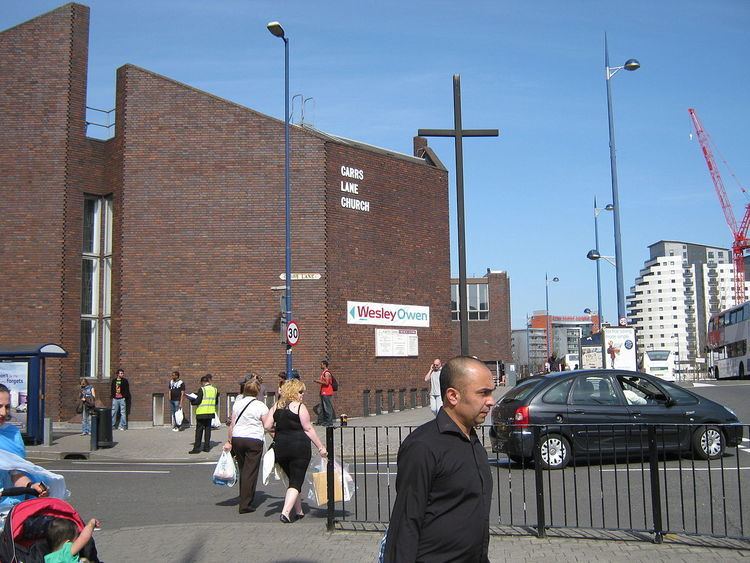Previous denomination Congregational Opened 1971 | Completed 1971 (1971) Groundbreaking 1968 | |
 | ||
Denomination United Reformed and Methodist Architect(s) Denys Hinton and Partners Similar Old Joint Stock Theatre, Methodist Central Hall - Birm, Old Rep, St Martin in the Bull Ring, Red Lion - Handsworth | ||
Carrs Lane Church, also known as The Church at Carrs Lane is a church in Birmingham and is noted as having the largest free-standing cross in the country.
Contents
History
The church was founded as an independent chapel in 1748 and then enlarged in 1812 at a cost of £2,000 to seat 600 people. A further enlargement was undertaken in 1820 to designs by the architect Thomas Stedman Whitwell, which was then re-fronted by Yeoville Thomason in 1876. The church became part of the Congregational Union in 1832.
The current building was begun in 1968 by Denys Hinton and Partners and completed in 1971. It became part of the United Reformed Church when the Presbyterian and Congregational churches merged in 1972. The church bears a blue plaque erected by Birmingham Civic Society in 1995 to commemorate Dr R. W. Dale, minister at Carrs Lane from 1854 until his death, and prominent preacher of the "Civic Gospel".
Since the closure of the Methodist Central Hall, Birmingham, the building has been shared with the Methodist Congregation, as a local ecumenical partnership under the name "The Church at Carrs Lane".
Organ
The church has a pipe organ by Hill Norman and Beard dating from 1970. A specification of the organ can be found on the National Pipe Organ Register.
